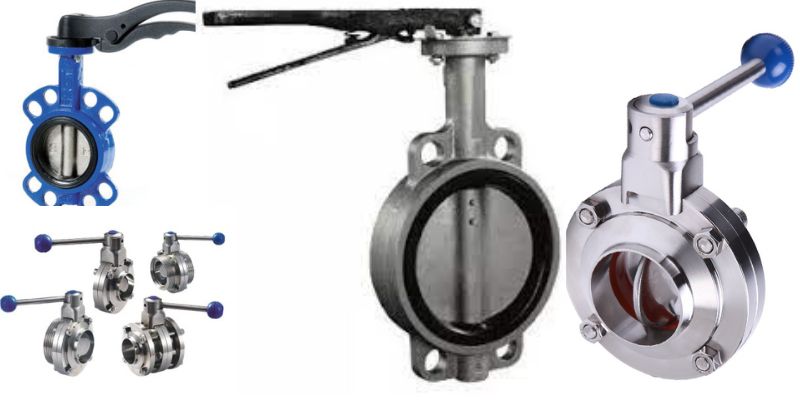A stainless steel butterfly valve is a type of quarter-turn valve that is used to regulate and control the flow of fluids. It consists of a disc-shaped closing mechanism, mounted on a rod, which rotates to open or close the valve. When fully open, the disc allows maximum flow, and when closed, it prevents the passage of fluid. Stainless steel butterfly valves are widely used in industries such as chemical, food and beverage, pharmaceuticals, and oil and gas. These valves are known for their durability, ease of operation, and cost-effectiveness, making them a popular choice for controlling the flow of fluids in various applications. There are many SS butterfly valve manufacturers but we will explore the complete guide for stainless steel butterfly valves to help you understand everything you need to know about them.
Benefits of Stainless Steel Butterfly Valves
Stainless steel butterfly valves offer a variety of advantages over other valve types. These are some of the primary benefits.
1. Corrosion resistance
Stainless steel is an alloy that contains a minimum of 10.5% chromium, which forms a passive oxide layer on the surface of the metal. This oxide layer, also known as a “passive film,” protects the underlying steel from corrosion by blocking the oxygen diffusion that would otherwise cause damage.
2. High strength and durability
Stainless steel butterfly valves are extremely durable and can withstand high-pressure environments. It’s design to handle a wide range of temperatures and can withstand harsh operating conditions.
3. Easy installation and maintenance
These valves are compact and lightweight, making them easy to install. They also require minimal maintenance, which reduces downtime and overall costs.
4. Cost-effective
In general, stainless steel butterfly valves are less expensive than other kinds of valves. They provide an excellent blend of value and performance.
5. High-Temperature Resistance
Stainless steel butterfly valves have excellent thermal stability, allowing them to function reliably in applications involving high temperatures. These valves can withstand elevated temperatures without losing their structural integrity or mechanical properties, making them well-suited for applications in industries like oil and gas, chemical, and power generation.
Types of Stainless Steel Butterfly Valves
Stainless steel butterfly valves come in various types, each suited for different applications:
1. Wafer butterfly valves
These valves have a wafer-shaped body and are sandwiched between two flanges. It is use in low-pressure applications and is easy to install.
2. Lug butterfly valves
Lug butterfly valves have threaded inserts or lugs on both sides of the valve body. It is typical use when the valve need to be installe without affecting the pipeline.
3. Double-offset butterfly valves
These valves feature a disc offset from the centerline of the valve seat and a shaft offset from the centerline of the valve disc. This design allows for a tight seal and reduces wear on the seat, improving the valve’s performance and reducing the risk of leakage.
4. Triple-offset butterfly valves
Similar to double-offset valves, triple-offset butterfly valves have an additional offset in the shape of a cone or a wedge. This design reduces friction and provides a bubble-tight shut-off, making them ideal for high-performance applications.
How to Select the Right Stainless Steel Butterfly Valve
Choosing the right stainless steel butterfly valve for your specific application requires careful consideration of several factors:
1. Temperature and pressure
Determine the maximum temperature and pressure the valve will be exposed to. Ensure that the valve can handle these conditions without failure.
2. Size and flow rate
Consider the required flow rate and select the appropriate valve size to ensure efficient fluid control.
3. Material compatibility
Assess the compatibility of the valve’s components with the fluid being controlled to avoid chemical reactions or contamination.
4. Operating conditions
Take into account the operating conditions such as the frequency of operation, the type of actuation required (manual or automated), and any specific industry standards that need to be met.
Installing and Maintaining Stainless Steel Butterfly Valves
Proper installation and maintenance play a pivotal role in ensuring the optimal performance and durability of stainless steel butterfly valves. It is imperative to adhere to the following guidelines for both installation and maintenance procedures.
- Ensure proper alignment during installation to prevent leakage or excessive wear.
- Regularly inspect the valve for any signs of wear, damage, or leakage. Replace any worn-out parts promptly.
- Lubricate the valve components as recommended by the manufacturer to maintain smooth operation.
- Regularly clean the valve to prevent the build-up of debris and sediment that can affect performance.
Conclusion
stainless steel butterfly valves offer several advantages, making them a popular choice for fluid control applications in various industries. By understanding the different types, selecting the right valves, and following proper installation and maintenance practices, you can ensure the optimal performance and longevity of these valves in your operations. Additionally, readers have gained insights into important factors to consider before choosing a valve, including pressure and temperature requirements, flow rates, and compatibility with different media.
For more details: (Click Here)

